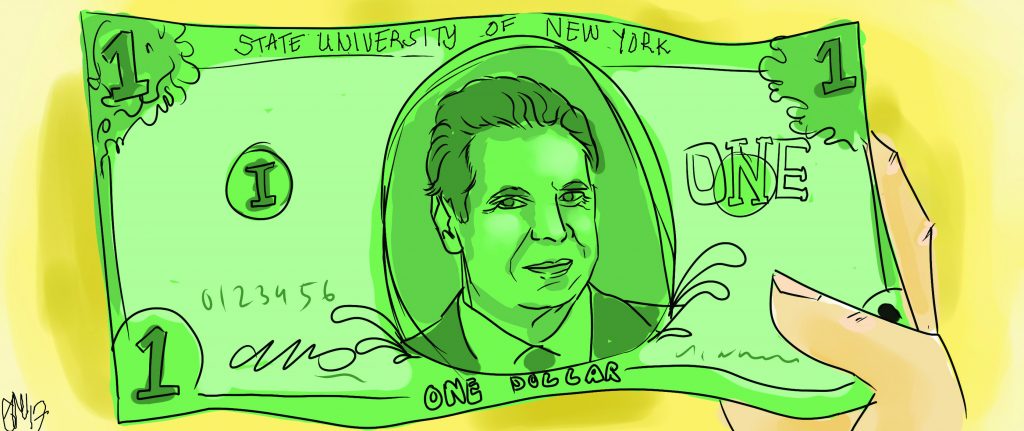A few months after the 2016 presidential race, Gov. Andrew Cuomo did something many students had campaigned for vociferously: he signed a bill making tuition at SUNY and CUNY schools free — ish.
The move was widely lauded as New York became the first state in the nation to offer free in-state tuition at four-year universities for families making less than $125,000 annually. However, as new details emerge about the plan, concerns have also been raised about its scope and effectiveness.
According to The New York Times, the program will only affect a portion of the middle class. It largely excludes families making less than $50,000 a year, who already receive aid from other programs. It does not cover room and board, a significant cost and major obstacle for many poorer students. This could force many qualifying students to simply attend the campus closest to their home, even if it may not be the best fit for them — given their acceptance to said campus.
Additionally, this scholarship only applies to full-time students completing 30 or more credits per year, excluding a large percentage of students who attend college part time. While free tuition for some is a step in the right direction, it is nothing close to what many, notably Bernie Sanders supporters, envisioned. Nor is it truly free education.
Since this plan is unprecedented, the consequences and benefits will take time to become evident. Some fear that the program will increase selectivity among the public school system to a point of fault: It could end up excluding disadvantaged students in favor of more advantaged ones toward the upper end of the $125,000 income limit. It could strain the resources of public schools, which already struggle for funding in some cases. Its critics argue that it was hastily thrown together by Cuomo in attempt to be the first state to offer free tuition, and thus policy details were not thoroughly thought out.
But, the plan can also be seen as an experiment. As the first of its kind, it will not be perfect, but its failures can lead to future successful reform. Even if it helps fewer students than intended, it will still increase education accessibility for some.
The issue of free tuition received national attention thanks largely to the efforts of college students during the presidential primaries and election. The governor cited his motivation for taking this step as the support the issue received during the presidential campaigns. Students helped bring the issue to the table; we are undoubtedly a powerful stakeholder in the matter. So, we must make sure to continue to use our influence as this program plays out to make sure it appeals to all our actual best interests — which don’t always match up with those of our legislators.
We can celebrate the passing of this law as a victory toward an equitable education system, but it is by no means time to throw in the towel. Rather, we can embrace the new law while remaining mindful of its flaws as we continue to demand the best for ourselves and our peers.



